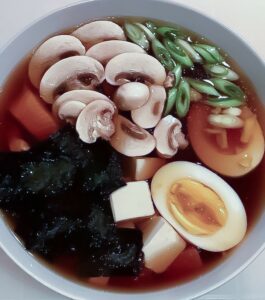
Onigiri is a Japanese word and means Japanese rice ball.
Rice plays an important role in Japanese cuisine. It is a staple food cuisine and is found in every Japanese home.
Most people have heard of short grain rice used for sushi rice. It is also the type of rice used for onigiri.
In Japan, the tasty rice ball contains one to two ingredients that compliment each other really well.
To ensure that the body also gets the vitamins and nutrition it needs, Sushi nori is wraped tightly, around the rice ball, so that it lies completely smooth. So with quite a few ingredients, rice ball embraces the entire diet pyramid.
Several have asked for healthy Japanese Onigiri. I have made a Mini e-book “5 healthy Japanese onigiri for 1”, where I teach you step by step how to make the tasty rice balls with filling.
Read more about Mini ebook: 5 healthy Japanese onigiri for one, price 60 DKK
_
Zoë has lectured and held sushi courses for A. P. Moller – Maersk, Hugo Boss Nordic, Novo Nordisk, Novartis, Velux, Gorrissen Federspiel, Beierholm revision, Elbek & Vejrup and many more.




